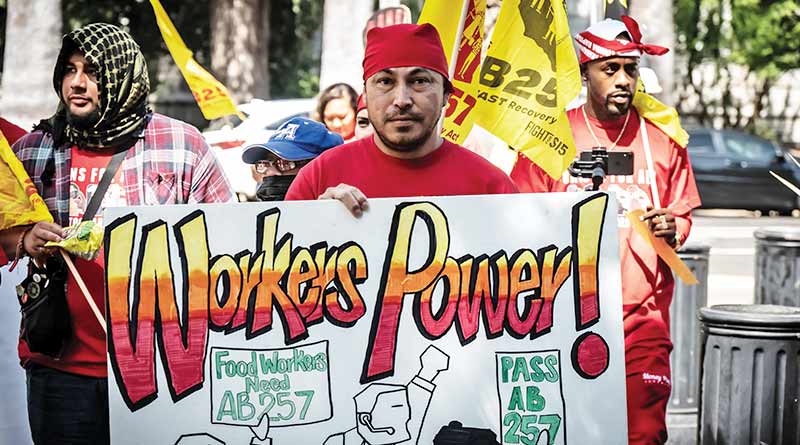Union win raises California minimum wage again
By Sheri Williams
As part of a union-backed bill signed by Gov. Jerry Brown in 2016, California’s minimum wage rose to $16 at the start of the New Year.
The wage increase is part of a series of minimum wage increases that the Fight for $15 movement, backed by SEIU and other unions, fought for and won nearly seven years ago.
“This is about economic justice, it’s about people,” Brown said when he signed the bill. “This is an important day, it’s not the end of the struggle but it’s a very important step forward.”
The wage increase affects about 1 million California workers, many who live paycheck to paycheck and struggle to make ends meet. Prior to the increase, the minimum wage was $15.50. With the increase, California has the second-highest minimum wage in the country, after Washington, where base pay is $16.28.
Despite the increase, unions continue to fight for better wages and working conditions largely due to the cost of living in California, where even the new minimum wage is insufficient for the average family to pay its bills.
“Our minimum-wage laws are still lower than what workers need to really get by,” Ken Jacobs, co-chair of the U.C. Berkeley Labor Center, told media. “These higher minimum wages have made a real difference in workers’ lives, but I think one of the reasons you’re now seeing a push for taking those wage levels higher is to address the increased cost of living in California.”
Two union wins will help fast food workers and health care workers see even more wage increases this year.
Last year, Gov. Gavin Newsom signed a bill that will raise the minimum wage for fast food workers to $20 an hour in April. The increase will apply to chains that have 60 or more locations nationwide.
Newsom also signed a law that will increase the base pay for many healthcare workers to $25 dollars an hour in coming years, a necessity as that industry struggles to find employees.
The fight for higher wages for minimum-wage workers began in the fast food industry in 2012, when restaurant workers in New York went on strike to demand $15 and a union. It was a rallying cry that many said would never happen. But, supported by SEIU, the Fight for $15 continued and grew into a nationwide movement. By 2014, just two years later, it was an active organizing effort in more than 190 cities.
By 2015, activists in California were able to collect enough signatures for a ballot initiative to raise wages. Faced with overwhelming public support, legislators jumped on board and helped pass the nation’s first $15 an hour minimum wage.
Still, the fight is not over and activists are seeking signatures for another ballot measure that would again raise the minimum wage in an effort to create base pay that is a living wage. Already, many California cities require higher pay for workers. San Francisco has a minimum wage of $18.07 beginning in July. That same month, pay in Los Angeles will rise to $16.78 as a minimum wage.
